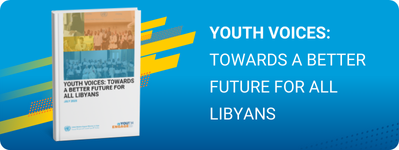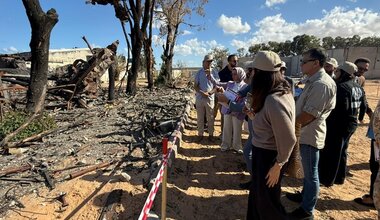Joint World Bank, EU, UN Report Assesses Damages Caused by Catastrophic Flooding in Libya
WASHINGTON, January 24, 2024 — Reconstruction and recovery needs following the catastrophic flooding in eastern Libya last September are estimated at $1.8 billion, according to a new report released today by the World Bank, the United Nations, and the European Union. The disaster impacted approximately 1.5 million people – 22 per cent of Libya’s population – living in the coastal and inland cities that were hardest hit.
The Libya Rapid Damage and Needs Assessment (RDNA) analyses damages and losses – as well as recovery and reconstruction needs – using a globally established methodology across almost all sectors of the Libyan economy. It finds the greatest impact has been on housing, the environment, Libya’s cultural heritage, as well as the transportation and water sectors. Housing was severely hit, with an estimated more than 18,500 houses destroyed or damaged, equivalent to seven per cent of the country’s housing stock, damaged or destroyed. The report estimates 70 per cent of the needed reconstruction costs would be for infrastructure, with housing the largest component.
In addition to outlining the recovery and reconstruction needs, the RDNA analyses the cost of physical damages caused by the flooding and the economic losses in its aftermath. Damages and losses are estimated at $1.03 and $.62 billion, respectively. The $1.65 billion total of damages and losses account for 3.6 per cent of Libya’s GDP in 2022.
The report looks at the impact of the disaster on the well-being of people in Libya. Nearly 44,800 people were initially displaced including 16,000 children. Access to healthcare and education has deteriorated, and food insecurity has increased in the affected areas. The most vulnerable people – including women, children, persons with disabilities, migrants, and elderly people – were particularly affected.
“Storm Daniel and the catastrophic floods that followed had a devastating, tragic impact on so many people in Libya who lost family members, their homes, and livelihoods. We hope this damage and needs assessment will inform recovery and reconstruction efforts that are inclusive, coordinated and help to build a more resilient future for people in Libya,” said Jesko Hentschel, Country Director for the Maghreb and Malta at the World Bank.
The assessment covers 20 municipalities, with an in-depth analysis of the five most affected cities (Derna, Soussa, Al-Bahda, Al-Marj, and Shahhat) where 85 per cent of the damages and losses occurred. It emphasizes the urgent need to focus recovery efforts in these areas.
Based on international experience, the RDNA suggests elements for national planning to overcome the impacts of this large-scale disaster. It underscores the importance of close collaboration and coordination among stakeholders across the country, as well as the support of international partners, to drive forward a resilient, inclusive, and sustainable recovery for people in Libya.
"Time is of the essence for affected people in eastern Libya. The proposed roadmap in this report offers a clear path forward that can support timely action, including through establishing a coordinated national platform for reconstruction. Let's channel our collective resources and expertise towards rebuilding, prioritizing the people - their livelihoods and well-being," said Georgette Gagnon, Deputy Special Representative of the Secretary-General of the UN, Resident and Humanitarian Coordinator in Libya.
"After the tragedy that struck Derna and the surrounding areas, the world witnessed Libyans from across the country coming together to provide emergency assistance to their fellow citizens in the face of unthinkable suffering. The international community also mobilized, inspired by this demonstration and compassion. The European Union and its Member States were on the front line from the very first hours. This RDNA provides a technical response tool that will permit an efficient and effective response to the affected area and population. We hope it can offer the basis for a much-needed national platform for reconstruction, echoing the Libyan people's example of unity," Nicola Orlando, Ambassador of the European Union to Libya.
About the Libya Rapid Damage & Needs Assessment
The Libya Rapid Damage and Needs Assessment report follows a globally established and recognized damage, loss, and needs assessment methodology developed by the World Bank with contributions from the UN, and the EU. This methodology has been applied globally in multiple post-disaster contexts to inform recovery and reconstruction planning. RDNA reports draw on the use of remote data collection such as satellite imagery, publicly available sources, information analytics, and partner organization’s data.
Contacts
For the World Bank:
Susan E. Pleming
Senior External Affairs Officer
For the United Nations Support Mission in Libya:
Mohammed ALASAADI
Public Information & Communications
For the European Union:
DELEGATION-LIBYA-COMMUNICATION@eeas.europa.eu
 United Nations Peacekeeping
United Nations Peacekeeping UN
UN









